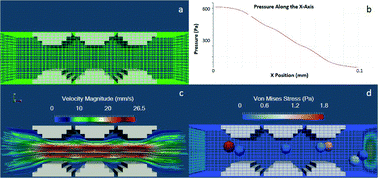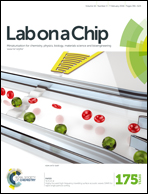Geometric effects in microfluidics on heterogeneous cell stress using an Eulerian–Lagrangian approach
Abstract
The response of individual cells at the micro-scale in cell mechanics is important in understanding how they are affected by changing environments. To control cell stresses, microfluidics can be implemented since there is tremendous control over the geometry of the devices. Designing microfluidic devices to induce and manipulate stress levels on biological cells can be aided by computational modeling approaches. Such approaches serve as an efficient precursor to fabricating various microfluidic geometries that induce predictable levels of stress on biological cells, based on their mechanical properties. Here, a three-dimensional, multiphase computational fluid dynamics (CFD) modeling approach was implemented for soft biological materials. The computational model incorporates the physics of the particle dynamics, fluid dynamics and solid mechanics, which allows us to study how stresses affect the cells. By using an Eulerian–Lagrangian approach to treat the fluid domain as a continuum in the microfluidics, we are conducting studies of the cells' movement and the stresses applied to the cell. As a result of our studies, we were able to determine that a channel with periodically alternating columns of obstacles was capable of stressing cells at the highest rate, and that microfluidic systems can be engineered to impose heterogenous cell stresses through geometric configuring. We found that when using controlled geometries of the microfluidics channels with staggered obstructions, we could increase the maximum cell stress by nearly 200 times over cells flowing through microfluidic channels with no obstructions. Incorporating computational modeling in the design of microfluidic configurations for controllable cell stressing could help in the design of microfludic devices for stressing cells such as cell homogenizers.

- This article is part of the themed collection: Nanoengineering for Medicine and Biology (NEMB 2015)

 Please wait while we load your content...
Please wait while we load your content...